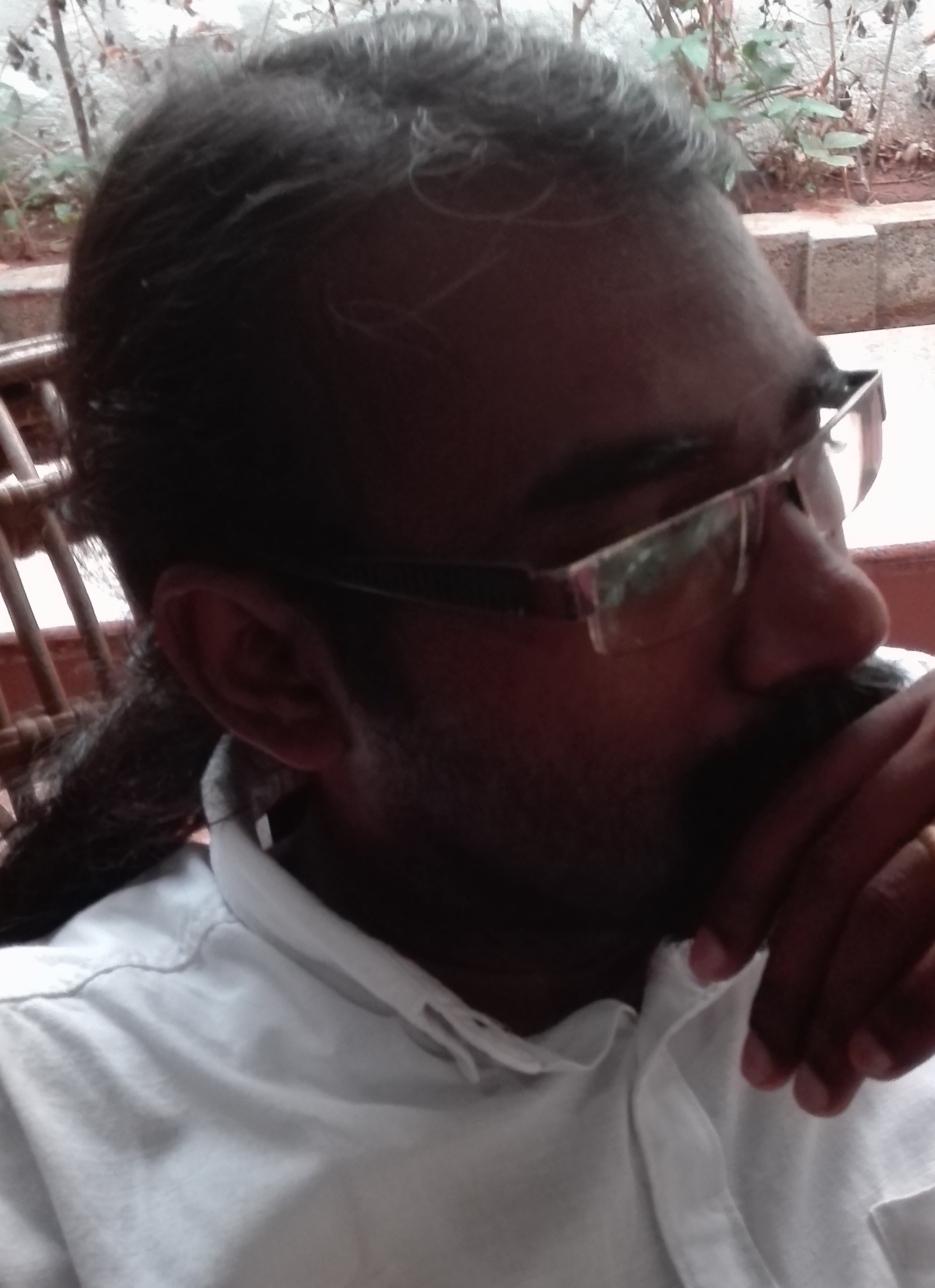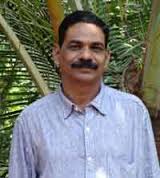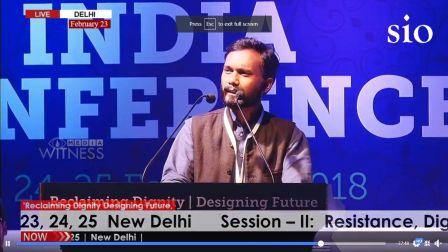Anilkumar PV
 As a point of entry, let us focus on the indictment that Manabendra Nath Roy made in his 1938 book on fascism with regard to the form and content of Gandhian politics: he prophesied that if Gandhian politics continued the way it was practiced by MK Gandhi, it would, sooner or later, end up in fascism. Simple minded as we are, we may take the emergency declared and performed to perfection by Indira Gandhi, former prime minister of India, to be the high point of the manifestation of the political prophecy of Roy. Doing that would be stupidity of the highest order. The point is that it is not by equating Gandhism with Indira Gandhism that we should understand Roy’s indictment because Indian National Congress, which was instrumental in openly displaying the fascistic content of the state, was a movement that, in Gandhi’s eyes, had lost its relevance when India achieved independence and had to be liquidated then and there. So there is no point in making Gandhi responsible for the metastases and power-desires that were/are the characteristic marks of Indian National Congress in the post-independent era.
As a point of entry, let us focus on the indictment that Manabendra Nath Roy made in his 1938 book on fascism with regard to the form and content of Gandhian politics: he prophesied that if Gandhian politics continued the way it was practiced by MK Gandhi, it would, sooner or later, end up in fascism. Simple minded as we are, we may take the emergency declared and performed to perfection by Indira Gandhi, former prime minister of India, to be the high point of the manifestation of the political prophecy of Roy. Doing that would be stupidity of the highest order. The point is that it is not by equating Gandhism with Indira Gandhism that we should understand Roy’s indictment because Indian National Congress, which was instrumental in openly displaying the fascistic content of the state, was a movement that, in Gandhi’s eyes, had lost its relevance when India achieved independence and had to be liquidated then and there. So there is no point in making Gandhi responsible for the metastases and power-desires that were/are the characteristic marks of Indian National Congress in the post-independent era.
In order to understand the fascistic content of the politics represented by Gandhi, it is better to study “the structure of the everyday life”, to use the subtitle of the French historian Fernand Braudel’s ground-breaking work Civilization and Capitalism, that we the political beings are supposed and forced to live. The point is: there is a difference between the power exercised by people who occupy the positions of power and people who do not occupy power positions. The first one is naked, coercive and visible, whereas the second one is disguised, consent-driven, and invisible (yep, the very good old point our bad young foe Gramsci made, which I unashamedly repeat. But Eqbal Ahmad said that it is in the nature of “truth” to be repetitive!). The power exercised by people who are apparently outside the ‘power points’ of the hierarchical power-machine known as the nation-state by resorting to the logical and argumentative framework of those who are in power, is much more oppressive and clogging than the naked exercise of repressive and coercive power by power holders. In fact, the paper money of state power is backed strongly by the solid gold of beliefs, prejudices and practices of the tax-paying and politically correct citizens. It is such an exercise of disguised everyday-life power that the Malayalam poet and activist Sugathakumari and one of the known Gandhian thinkers in Keralam K Aravindakshan (also, a good old friend of mine, who helped me by lending the book Saraswathi Vijayam in 2000 when it was not available in the market) displayed in their article published in the Mathrubhoomi newspaper on August 27, 2014.
Both these writers, instead of confronting the logical frame of the criticism levelled against Gandhi by the activist author Arundhati Roy, play what the students of logic would call red herring strategies and evade the criticism altogether and, gesturing their solidarity with the state-sponsored historiography, are hell-bent on proving and establishing their version that Gandhi is a human being of the highest order. Theirs is emotional tear-jerking of the most garden variety. And there are people who may theorize on such tear-jerking as a genuine form of resistance that could not be reduced to the rigid conceptual categories of the rational discourse of Western modernity. We have thousands of pages of intellectual exercise running along this line from postcolonial Indian elites. Nandy is the supreme example of the Indian postcolonial elite who does celebrate the “inviolable core of Indiannness “, which refuses to lose its “soul” and internalize “the victor” (111). In fact, Nandy has produced a hermeneutic of the sort about the superiority of the Gandhian politics over other forms of nationalist assertions. To this kind of postcolonial discourse, which makes a festival out of the oriental difference, or Indian difference precisely, with the help of battle slogans and costumes borrowed from the West, I have to repeat what the Argentinean thinker Augusto Boal did in his The Theatre of the Oppressed to Aristotle’s high-fi theory of tragedy: to remind the dead Aristotle and his admirers that Boal comes from a place where a spade is called a spade (you know, Eqbal Ahmad said that it is in the nature of “truth” to be repetitive. The thing Ahmad does not seem to have quite grasped is that to be repetitive is there in the nature of falsehood as well!)
So I must repeat Boal and remind people belonging to the ranks of Ashis Nandy that I come from a coastal village of Keralam where people can understand from the smell of fish curry whether the sardine that is cooked is good or rotten. We know this “inviolable core of Indianness” for what it is: it is the “genius” of India which has produced the caste system, a system quite peculiar to India in its brutality and inhumanity, and which goes on living in the soul of India, unchanged. It was to this core of Indian society that Gandhi clung unto death. The rest of his politics can be termed for what it is in simple language: political opportunism at its purest, which intellectual gymnasts like Nandy on the parallel bars of western modernity and Indian difference theorize in great style. We have no time for such gymnasts.
We must instead focus on the attempt by the two Malayali intellectuals to hero-worship Gandhi at a time when Gandhi is being questioned from various quarters. We want to directly tell them one thing: we have no problem in your creation of a “Gandhi myth” and the subsequent construction of a temple in the minds of the people. We have no problem in your constructing an idol for the contemporary people. They are legitimate gestures. But we have problem at the precise moment when you misunderstand that your political project is also the political project of people who are denied entry in temples, real or imagined temples, or people who have no interest in idol worship. You can misunderstand, but you cannot force your misunderstanding on others. That needs correction. And Friedrich Nietzsche’s Thus Spake Zarathustra offers you some thoughts for correction:
Ye venerate me; but what if your veneration should some day collapse? Take heed lest a statue crush you!
Ye say ye believe in Zarathustra? But of what account is Zarathustra! Ye are my believers; but of what account are all believers!
Ye had not sought yourselves: then did ye find me. So do all believers; therefore all belief is of so little account. (74)
The Indian middle class, which is afraid of engaging in direct confrontation, may think if this is the right way to deal with the piousness and non-violence of the worshippers of Gandhi. And the politically correct postcolonial Indian elite may find it almost difficult to understand why the name of Gandhi evokes so much anger in the minds of Dalits. After all, is not Gandhi a superstar of peace and non-violence for all seasons?
Okay, we concede that your apprehension about Dalit anger is understandable, but what we fail to understand is your inability to examine and analyse the very foundation of Gandhian piousness and non-violence. If you had done a little bit of homework, you would have understood what the violent foundation of Gandhian non-violence is. For example, let us examine the “greatest common factor (GCF)” of the people in Keralam who attacked and also unconditionally pardoned Arundhati Roy for her criticism of Gandhi. The GCF of these people is that they all belong to the upper strata of the caste hierarchy. And this GCF points to certain structural aspect of Gandhian politics. It must be borne in mind that no Dalit intellectual in Keralam has so far publicly criticized Roy for her criticism of Gandhi. Despite the fact that some Dalit intellectuals have rightly understood the Brahminical appropriative strategies that are at work in Arundhati Roy’s introduction to Ambedkar’s work Annihilation of Caste, they, it seems, have no problem with her criticism of Gandhi and Gandhian politics. These factors force us to be blunt: in truth, the politics of Gandhi, with all its piousness and non-violence, is basically and essentially the politics of the savarna.
If Dalit people and other victims of our social fabric do not feel inclined toward the non-violent theatre of the worshippers of Gandhi, there is no point in blaming them. The logical ground of this apprehension that Dalit people show toward the piousness that is put on show by savarna intellectuals and activists of Keralam, has already been explored by Malcolm X, the revolutionary African-American thinker and activist, in the context of racism. We all know that Malcolm X was for a long time, in the minds of the American white at least, infamous for a political position: white man as such is evil. This is what Slavoj Zizek’s take on Malcolm X’s position:
The meaning of this pronouncement is not that all whites are evil but rather that, because of the wrongs committed by white men against black people, evil pertains to the very universal notion of a white man. This, however, does not prevent me, an individual white man, from becoming ‘good’ by achieving awareness of the Evil that defines the very substance of my being, and by fully assuming this guilt and working to overcome it.
From this perspective, it is the unconscious reasoning that non-violence by savarna as such is evil that makes Dalits distrustful of the piousness and non-violence of the Gandhi’s followers. In other words, the non-violent piousness of Gandhian politics is a luxury that only the savarna can afford. As for Dalits, the very name Gandhi evokes in their mind fear and anger. How else could a people perceive a Mahatma who forged them in the smithy of Hinduism and made them one of the best objects in his experiments with truths? If they lack that anger, it is not politics proper; it is not a politics of self affirmation; it is not a politics of the subject of truth. It is precisely because of this reason that Frantz Fanon in his celebrated The Wretched of the Earth construes violence as a collective psychoanalysis of the oppressed to overcome his/her inferiority of the body/mind complex structurally created by the technologies of colonial violence. This is what Eqbal Ahmad has to say about it:
The point about Fanon’s chapter on violence, for example, in The Wretched, was massively misunderstood and distorted by the reviewers in the United States and also in Europe. They merely saw in it a celebration of violence, which it was not. What it was was an emphasis on the importance of resistance, of struggle in the discovery of one’s own and the other’s humanity, of coming into the fullness of a collective self. (44)
Only when a people stand straight with a feeling of anger toward a system which has made them inferior and also the object of the condescending politics of the upper caste Hindu that they can begin a politics which can dismantle that system. It is as plain as that. And those “pious” and “non-violent” poets and intellectuals who smother every Dalit voicing and are non-violently intolerant toward the politics of the other are, in reality, the foot-soldiers of the status-quo.

Another common factor discernible in the worshippers of Gandhi is the childlike “ignorance” that they manifest with regard to Ambedkar’s work and the contemporary Dalit discourse. Only when we discern that this ignorance is not as accidental as it seems, but is structurally built into the system and in the minds of the intellectuals that we perceive the magnitude of metastases that untouchability has undergone. The Dalit intellectual Chandra Bhan Prasad provides the right perspective to understand the metastases. In his formulation, untouchability is not a social evil as it was understood by Gandhi. Rather it is a ‘political doctrine of exclusion’. In other words, it is not a problem that could be solved once caste Hindus change their mindset, as Gandhi thought, and start touching Dalit skins. Untouchability as a political doctrine of exclusion would not be dissolved even if Gandhi cleaned the toilet of a Dalit.
As Ambedkar, the shrewd commentator and critic of Gandhi, realized such condescending political gestures that Gandhi played with regard to untouchable politics would make him the rightful candidate to the fascist tradition of Indian spiritualism. Is it not precisely what happened when he became the Mahatma at the cost of other’s plight and the sole champion of the untouchable cause? He knew what was good for the nation and the untouchables. The only option that others had was venerate Gandhi for his humbleness and greatness. There was not an iota of space for others to question him. No wonder, even as powerful and uncompromising a leader as Ambedkar had to surrender to the Gandhian blackmailing of fast unto death (something Gandhi never tried with the sturdy Muhammad Ali Jinnah) when he decided to withdraw his demand for separate electorate for untouchables.
What is the paradigm shift that Prasad effects to our understanding of untouchability? His point is that one could practice untouchability even when one is opposed to it in principle. And this understanding is crucial. When historically the upper caste denied Dalits the entry into the citadels of financial, symbolic and cultural capitals with the ideological justification of ‘impurity’, what in effect happened was that Dalits were denied any possibility of upward mobility in the socio-political realm. These accumulated capitals in the hands of the upper caste and the void in the hands of the Dalits could only be settled through a thorough redistribution of wealth and re-evaluation of all values. The possibility of the politics of redistribution and re-evaluation is what was prevented when Gandhi packaged and sold untouchability in the form of ‘social evil’, which could be fought actively by a voluntary decision of the elite not to practice it! Ambedkar, thoroughly knowledgeable of the Gandhian elite class politics of paternalism, attacks it ruthlessly, which many Indian admirers of Gandhi are blissfully amnesiac of:
Mr Gandhi does not wish to hurt the propertied class. He is even opposed to a campaign against them. He has no passion for economic equality. Referring to the propertied class Mr Gandhi said quite recently that he does not wish to destroy the hen that lays the golden egg. His solution for the economic conflict between the owners and workers, between the rich and the poor, between landlords and tenants and between the employers and the employees is very simple. The owners need not deprive them of their property. All that they need to do is to declare themselves Trustees of the poor. Of course the trust is to be a voluntary one carrying only a spiritual obligation.
Untouchability, as Gandhi understood it, was prohibited when Indian constitution came into being, but untouchability, as Dalits understand it, is still prevalent in every nook and corner of India and other parts of the world to which the “soul” of India and the “inviolable core of Indianness” migrated. It is there at the level of the political power distribution; it is there in the realm of intellectual exercise; it is there at the level of distribution of wealth.
Untouchability is, at the bottom, a mindset of the savarna as well. The greatest proof of it is the article by the poet Sugathakumari. According to her, if we have hitherto not talked much about Ayyankali, the pioneering leader from Dalit community of Kerala modernity, the best way to resolve the issue is by talking more about Ayyankali and not by vilifying Gandhi. What a solution! Nowhere in her article has one encountered a sentence where she makes a soul-search about the reason why savarnas like her hitherto were silent about Ayyankali. In fact, it has not even appeared to her as a problem! Poor pious non-violent soul!
Why have they not talked about Ayyankali? Why is it that only Dalits have to talk about Ayyankali? Why is it that when Dalits and people sympathetic to Dalit cause talk about Ayyankali and as a consequence criticize Gandhi, the pious non-violent souls attack them in the most ruthless of manner? Well, you know the answer! That is untouchability in the new garbs.
If one wants to stick on to the myth that Gandhi was a Mahatma, one has to structurally erase Ayyankali from one’s historiography. Otherwise, such myth-making is almost impossible to attain. If one sheds one’s pious non-violent garb and ready to make an eyeball-to-eyeball encounter with truth, one can easily perceive that it is not that easy to make Gandhi a Mahatma. If Sugathakumari cannot understand both Ayyankali, the so-called illiterate, who took two girls to the school for education when education was allowed to Dalits for the first time, and who created the organization named “Sadhujana Paripalana Sangham” (the organization for the welfare of the oppressed) and carried in his mind a broader politics of the oppressed, and the western educated Gandhi, who called Ayyankali the “Pulaya king” and gave him a narrow caste label, and who carried in his mind caste and king, that does not mean that Dalits will not understand both Ayyankali and Gandhi.
And there is also another instance, which debunks the Mahatma. It is the satyagraha orchestrated for the entry of untouchables to Vaikkom temple. Everyone knows about Gandhi’s hypocritical role in it, but in the official historiography of Keralam and its school textbooks, it is a great event! And Gandhi’s role is even greater! I do not want go into the details of it here. But I would point out two facts here with regard to temple entry proclamation in general: (1) temple entry was not there in the political agenda of Ayyankali and (2) even though he lived only a few miles away from the Sri Padmanabha temple and was alive for nearly six years after the temple had been open to the untouchables, he never cared to go there at least once!
This is an excerpt from the author’s forthcoming book. Please don’t reproduce without permission.
~~~
Anilkumar Payyappilly Vijayan is Assistant Professor of English at Government Victoria College, Palakkad, Kerala. He has a PhD in English from Kannur University. His doctoral dissertation titled “Untouchability of the Unconscious: Containment and Disfigurement of Dalit Identity in Malayalam Cinema” makes, with the help of Lacanian psychoanalysis, a methodological inquiry into the logical aspects of the construction of Dalit identity in Malayalam cinema.
Cartoon by Unnamati Syama Sundar.










